Luzinterruptus is an anonymous Madrid-based artist group that uses light and shadow to cast awareness on urban problems that often go unnoticed by authorities and residents. The members of the group come from a wide variety of disciplines and work together to apply their different specialities towards a collective project. They started their work in 2008, anonymously showcasing and embellishing public areas that possess artistic potential.
The works of Luzinterruptus draw on a multitude of artistic fields including photography, design and fine arts. The group met through common friends, and discovered a shared commitment to urban art. They now create artistic interventions in public spaces and hope to inspire passing individuals. Their name ‘Luzinterruptus’ is a term composed of Luz, which means light in English, and interruptus which means switch in Latin. The name represents the philosophy of the group perfectly. Recently, Arts Help journalist Chandni Bhatt interviewed Luzinterruptus to find out more about their inspiring artwork.
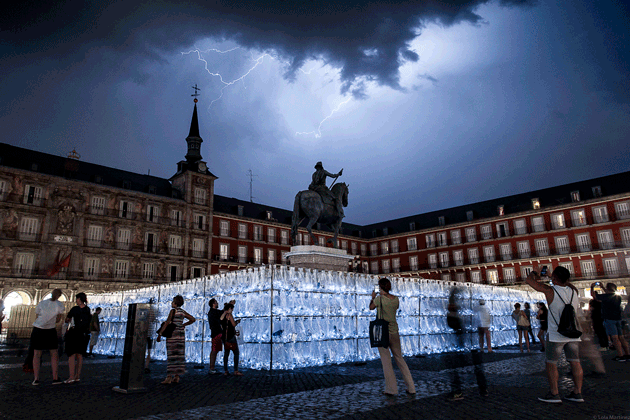
What inspires your art?
Our work is very much inspired by urban art and the interventions of guerrilla, counter-advertising, situationist drifts and performance. Our goal has been to transfer our ideas and thoughts to critics on the street and share it in a way that was away from the galleries and didn’t leave permanent pieces that would deteriorate the environment around it. This is why we carry out ephemeral art using light as an ally because once it goes out, it leaves no trace in the landscape.
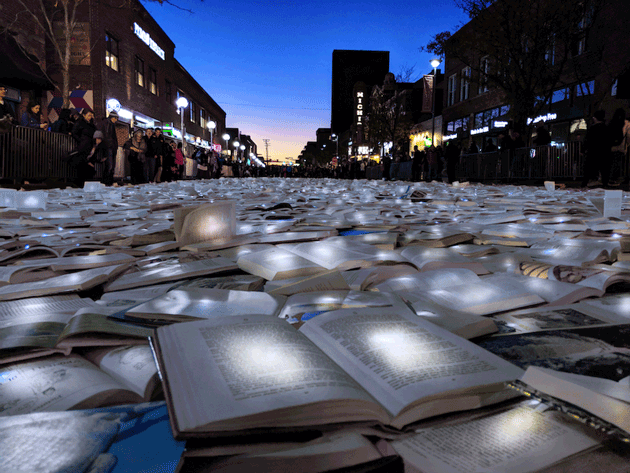
What is the emotion you hope to evoke with your work?
Our first hope is to evoke shock, and for this light is an ideal medium. We use light to illuminate very basic materials and give them a magical presence. Once we have drawn attention to our work, we aim to help people reflect on the issues that concern us, many times we use irony and humor to achieve this.
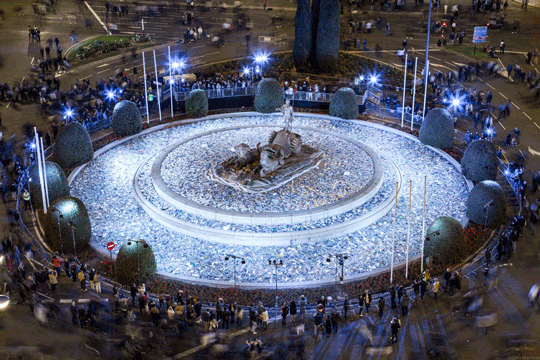
What are some of the biggest challenges you faced when displaying your art interventions? How did you overcome these challenges?
There are many challenges when it comes to carrying out our work. When we do it in guerrilla mode it is difficult for us to find the financing. It is also important that the police do not stop us. We often have to ensure that the intervention lasts a long enough period of time that people get to see the precariousness of the work and get good documentation of it. What is truly important is that our work is understood without the need for explanation. However, when we work during big events, our challenges are somewhat different. For example, we need to ensure that the companies we are collaborating with do not try to distort our messages or provide us with insufficient payment and materials. The most critical obstacle though, is working with bureaucracies that encourage us not to engage with this type of work, it becomes more complicated to work with these kinds of administrations each time we do something new. To overcome these challenges we believe that we have a great capacity for adaptation and flexibility that we have largely acquired by working on the street and interacting with people.
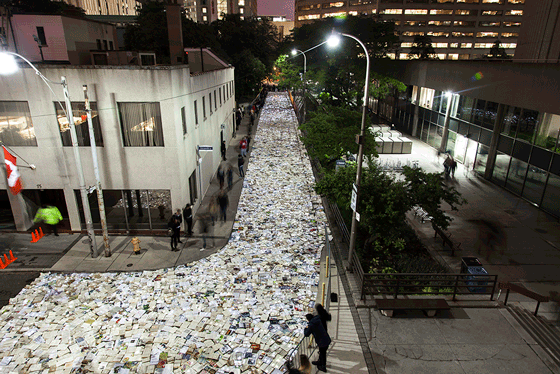
How do you come up with some of the ideas for your work , such as your piece of the 3,000 raindrops made out of condoms? Walk me through your creative process.
We observe the reality that surrounds us, we are attentive to the news, and we walk through the streets a lot. All this provides us with very close contact to the reality that we later capture in our works. We also like to use many primary materials, those that surround us and do not receive importance until the light makes them magical and surprising. Condoms, for example, are important common objects in our lives. However, it seems that people have many prejudices with them, especially when it comes to touching them. We immediately saw infinite possibilities both for their use and for the material with which they are made. Latex is a highly versatile material that is flexible, resistant and transparent. Mixing that with light and water, turns them into wonderful shiny droplets that leaves you mesmerized.
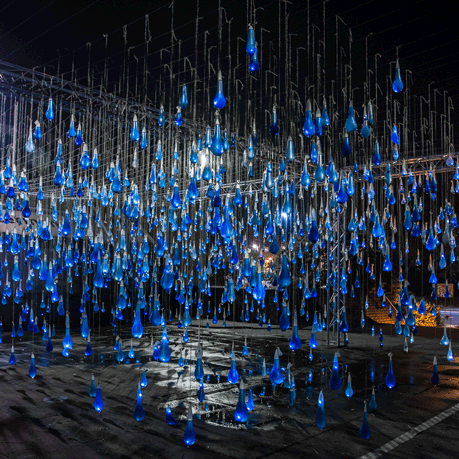
What is one intervention of yours that was your favourite or you believe was the most successful in achieving your purpose as an artist group?
Literature vs Traffic, Plastic Waste Labyrinth and Plastic Islands are some of our most popular pieces. However, our personal favorites are the ones that we carry out illegally on the streets. Among them is "The police are present", which brings together the values that most characterize our work. It conveys a powerful message that provides maximum visibility to audiences.
How has the COVID-19 pandemic influenced or affected your work?
COVID-19 has had quite a negative impact on our work. At the onset of the pandemic, we were unable to work on the street, and we had all our projects in Spain and abroad taken down. Now it seems like the light is at the end of the tunnel, but we are still far away. About a year will pass before we can carry out our interventions in public places again. However, as for the essence of our work, we have changed very little. We still believe that the issues we were talking about are fully valid and even more necessary to talk about now.
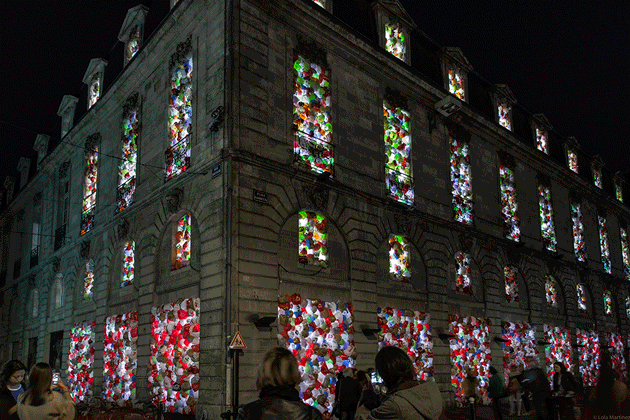
Where can people follow your work?
Website: https://www.luzinterruptus.com/
Facebook: https://www.facebook.com/Luzinterruptus
Portfolio: http://www.luzinterruptus.com/works/?lang=en
Instagram: https://www.instagram.com/luzinterruptus/
Projects: http://www.luzinterruptus.com/works/proyectos/?lang=en
